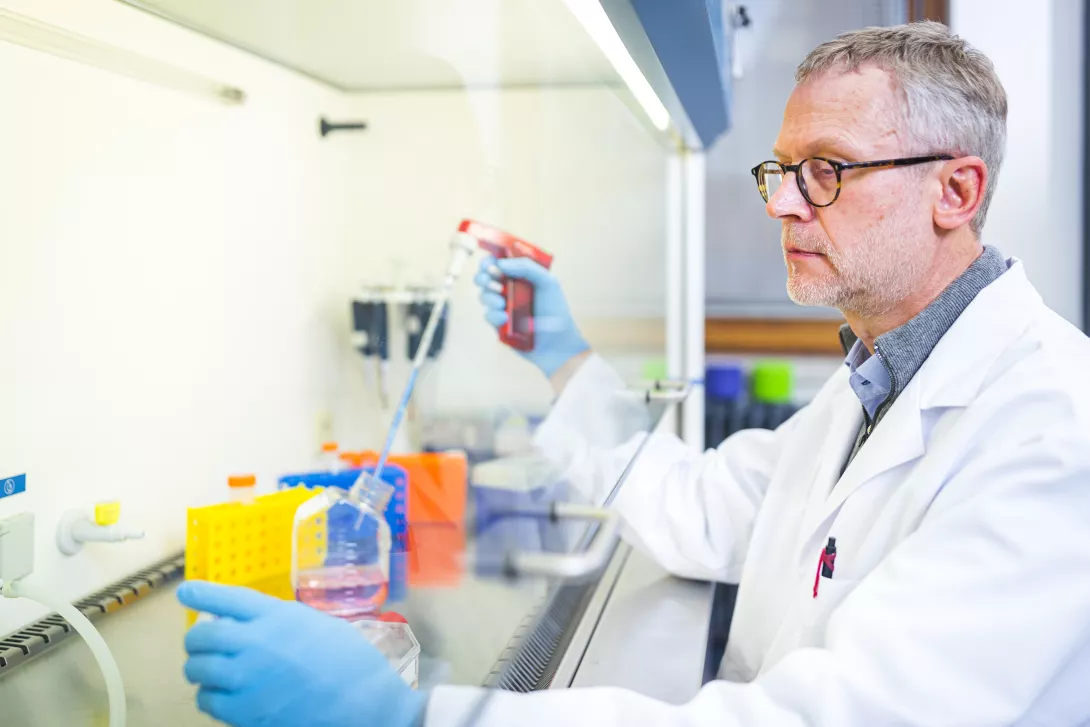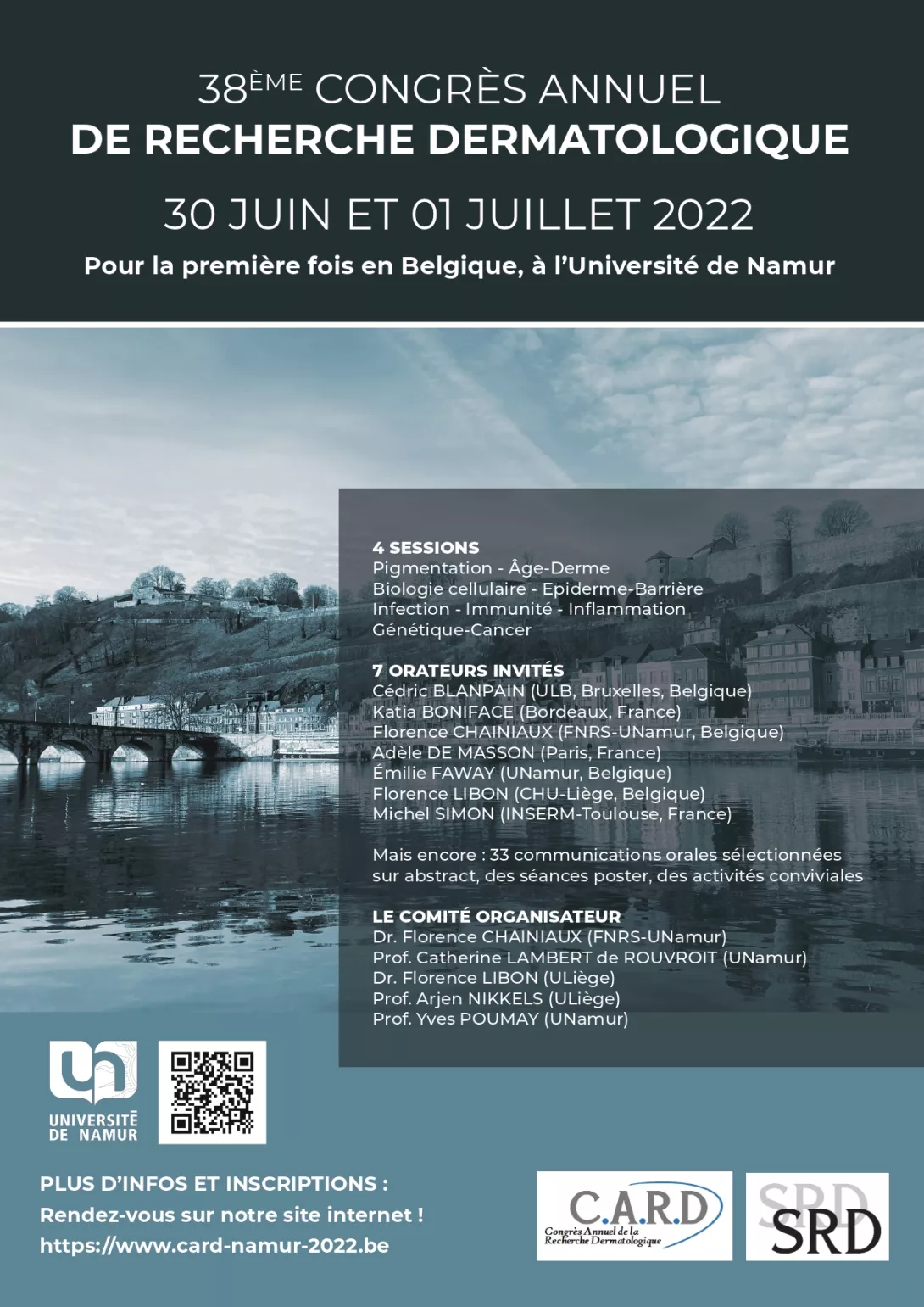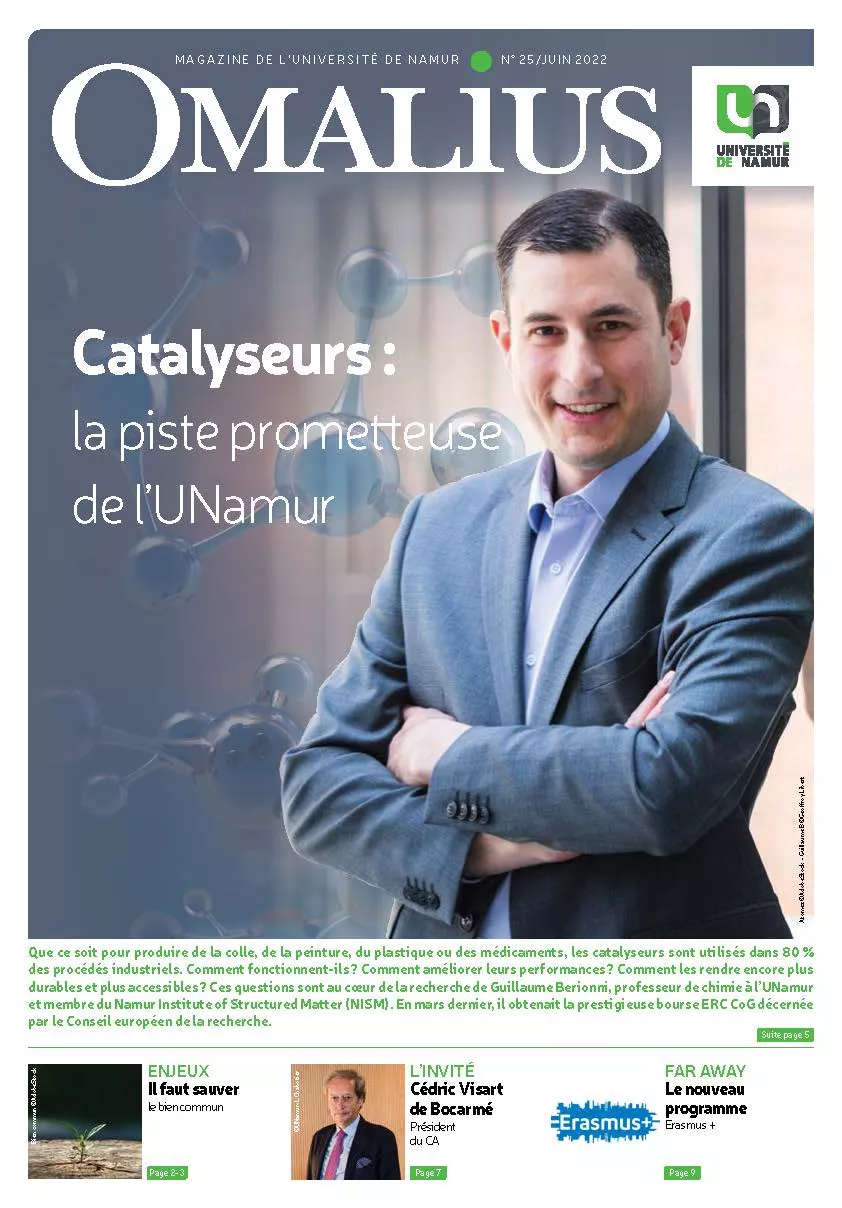
This interview was conducted for the "Expert" section of Omalius magazine #25 of June 2022.
Your research focuses on the study of the epidermis and its pathologies, but what is the epidermis? What is its role?
The human skin separates our watery organism from its airy environment thanks to three layers that make it up. The epidermis, which forms the main barrier, protects us from the outside and prevents the escape of body fluids. It rests on a connective dermis made up mainly of collagen, followed by a fatty layer called the hypodermis.
What are the main skin diseases?
Apart from skin cancers, which are among the most common, but fortunately often easy to treat and detected quickly, except for melanomas which concern our pigmentary cells (which colour our skin), the skin is often the reflection of activations of the immune system. Many common skin conditions such as psoriasis, atopic dermatitis or eczema are in fact inflammatory diseases. These conditions are rarely emergencies, but they are recurrent with high incidences in the population. Skin cancers are also very common, but in most cases are rapidly detected. Melanocyte cancers, which are responsible for tanning after UV exposure, are very problematic. All too often, their outcome is fatal and their incidence is increasing, especially in the so-called Caucasian (white European) populations that expose themselves to the sun.
What are the current treatments? And how can the risk of disease be reduced?
Inflammatory diseases are increasingly well managed with effective treatments. For skin cancers, regular screening is the best attitude to adopt, after protection against sun exposure of course.
These various pathologies are studied in your laboratory. What is its expertise?
Epidermal cells have been cultivated in our laboratory since the 1980s, at the time of Professor Robert Leloup (dermatologist and professor emeritus who founded the Department of Histology-Embryology, Editor's note). Cultures were used to reconstruct epidermis in the 2000s, when alternative techniques to animal experimentation became a necessity. We were a pioneer in disseminating the know-how for these reconstructed tissues. Our team is therefore specialised in the study of pathological phenomena affecting the epidermis in culture, using reconstructed in vitro models.
And this leads to important discoveries in terms of dermatological treatments...
Yes, it does. For example, the evaluation of treatments for atopic dermatitis can be carried out on our models. We are also developing models of epidermal infections by fungi called dermatophytes (responsible for ringworm), or by opportunistic fungi (yeasts of the Malassezia genus), which should lead to improved treatments.
Your techniques and research are shared throughout the world, thanks to fruitful international collaborations. Can you give us some examples?
Our team collaborates with French teams in Toulouse, Angers and Lyon. Our exchanges on reconstructed skin models and alternative techniques have positioned us in a European network of research on the epidermal barrier. In the USA, we collaborate with the Department of Dermatology at Mayo Clinc in Scottsdale, Arizona, where my sabbatical year was to lead to studies of the interactions of melanoma cells with the rest of the epidermis. In Missoula at the University of Montana, we have a collaboration to evaluate inhibitors of retinoic acid metabolism (an American researcher stayed with us for his PhD in 2018), antifungal agents and since this year other molecules inhibiting cell signalling. We recently helped a team from Nijmegen in the Netherlands to edit epidermal cell DNA and model barrier pathologies. These exchanges of know-how and ideas are undeniably valuable in advancing research.
Express CV
- Professor of cell biology and histology in the Faculty of Medicine.
- Director, since 1994, of the LabCeTi laboratory composed of a team of about ten people and integrated within the Narilis Institute.
- Dean of the Faculty of Medicine from 2015 to 2019.
- Director of the Moretus Plantin University Library from 2011 to 2013.
- Honorary doctorate from the Medical University of Plovdiv (Bulgaria), in 2012.
- Namurian of the Year in 2009 in the category Science for the development of alternative models to animal experimentation.
- Associate member of the Royal Academy of Medicine of Belgium since 2021.
CARD Congress: hundreds of dermatology experts gathered at the UNamur
Between his research and teaching missions, Yves Poumay has also been busy organising the Annual Congress of Dermatological Research (CARD) of the Society for Dermatological Research (SRD). It was held at UNamur on 30 June and 1 July 2022. This congress was an opportunity for researchers and clinicians in French-speaking dermatology to meet and exchange on their expertise in dermatological research.

This interview was conducted for the "Expert" section of Omalius magazine #25 of June 2022.
